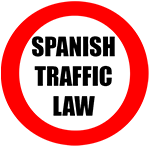1. Out of populated areas, in all routes covered by the law, and in sections of town included in the development of a road that does not have space specially reserved for pedestrians, as a general rule, walking will be done on the left (article 49.2 of the articulated text).
2. Notwithstanding the conditions of the previous section, pedestrian traffic will move to the right when circumstances arise that justify it for safety reasons for all involved.
3. In town, pedestrians may move on the right or on the left, depending on the specific circumstances of traffic, road or visibility.
4. Notwithstanding the conditions of paragraphs 1 and 3, those who push or drag a two-wheeled cycle or moped, handcarts or similar devices, any group of pedestrians directed by a person or forming a group or a cortege and the disabled who move in a wheelchair should always move on the right. All of the above must obey the signals addressed to the drivers of vehicles: those of the agents and traffic lights, always; the others, as far as they are applicable.
5. The movement on the hard shoulder or roadway will be done with prudence, without unnecessarily obstructing the movement, and approaching as much as possible to the outer edge of those. Except in the case that they form a cortege, they must march one after another if the safety of the movement so requires, especially in cases of low visibility or high density of vehicle traffic.
6. When there is a shelter, pedestrian zone or other suitable space, no pedestrian must remain stopped in the road or on the hard shoulder, even if they are waiting for a vehicle, and to board, they can only get in when it is at the correct position.

7. When perceiving the optical and acoustic signals of priority vehicles, they should clear the road and remain in shelters or pedestrian zones.
8. Driving on residential streets duly marked with the signal S-28 regulated in article 159 will conform to the requirements of the signal.


